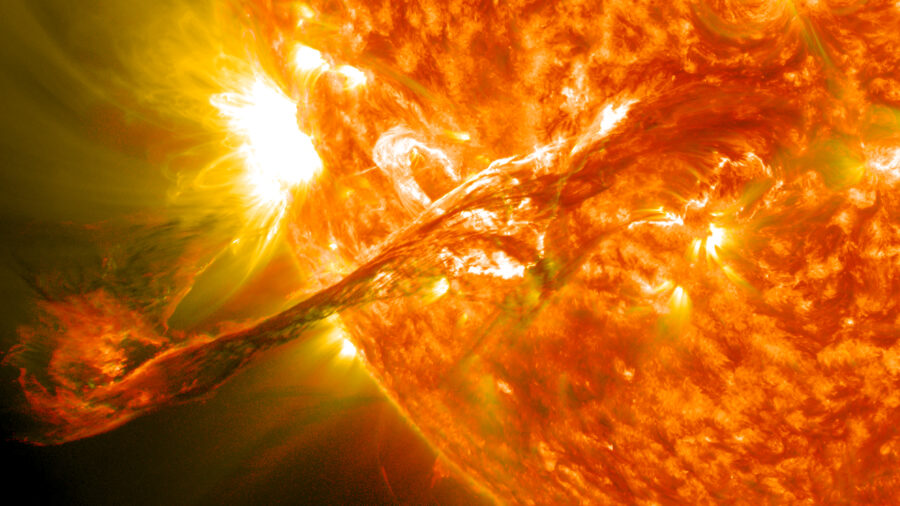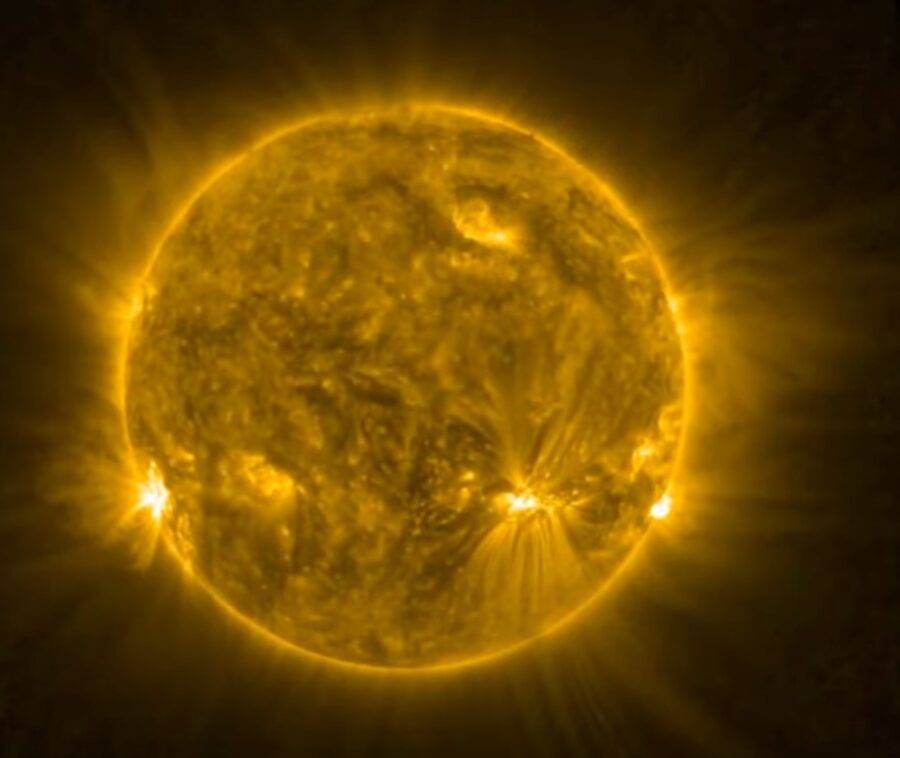Killer Solar Storm Warning Revealed And It’s More Terrifying Than We Knew
The most lead time we can get about a potentially deadly solar storm is 30 minutes.

For better or for worse, artificial intelligence is quickly taking over nearly every aspect of modern-day life, and scientists have recently learned how to have AI analyze data to help warn us about solar storms. As it turns out, even with new AI models, these warnings aren’t going to do us a lot of good, as Science Alert reports that we will only have a 30-minute notice before a solar storm hits the Earth.
If that wasn’t terrifying information, we don’t know what is. Despite common belief, the Sun isn’t just a bright ball of fire floating peacefully in our solar system; it’s actually a huge ball of molten gas that is constantly changing and emitting massive bursts of energy that erupt through solar flares and coronal mass ejections. As the third planet from the Sun, if our solar system’s star decided to have a particularly rough day and emit a deadly solar storm, we’d be one of the first planets impacted, and a 30-minute notice doesn’t give us a lot of time to protect ourselves.
Luckily, the Earth’s scientists aren’t slackers, and they’ve been hard at work for years to learn more about solar storms and increase the lead time of knowing if a deadly storm is coming our way. There is a plethora of satellites orbiting Earth and pointing at the Sun so that we can further research and learn how to quickly identify these solar flares before they impact our planet.
Several satellites, such as ACE, Wind, IMP-8, and Geotail, provided valuable data to the NASA team about solar storms. However, AI researchers understand that in order to create a predictive model, it is crucial to specify the intended prediction. We can’t just tell the AI that a storm is on the way, we also have to inform the software what the storm will do to the Earth once it gets here.

To gather comprehensive information, NASA scientists also collected data from ground-based stations that were affected by certain storms detected by the satellites. The researchers are now using this information to create a smarter learning model named DAGGER. This new model is unlike any other solar storm-detecting tool we’ve used in the past, especially when it comes to the speed of its predictions.
DAGGER has an impressive algorithm that can predict how bad a solar storm will be and what direction it will go in under a second, and it has the ability to create a prediction every single minute. This new technology has increased our lead time from basically nothing to the 30-minute solar storm warning we now have. DAGGER is also being released at a prime time as the Sun is currently nearing the end of its 11-year solar cycle, which will conclude in 2025, meaning it’s the optimal time for it to collect some pretty important data.
So, while 30 minutes doesn’t seem like a whole lot of time to prepare for a solar storm, it’s a way longer warning than we used to have and the science is getting better every single day.












